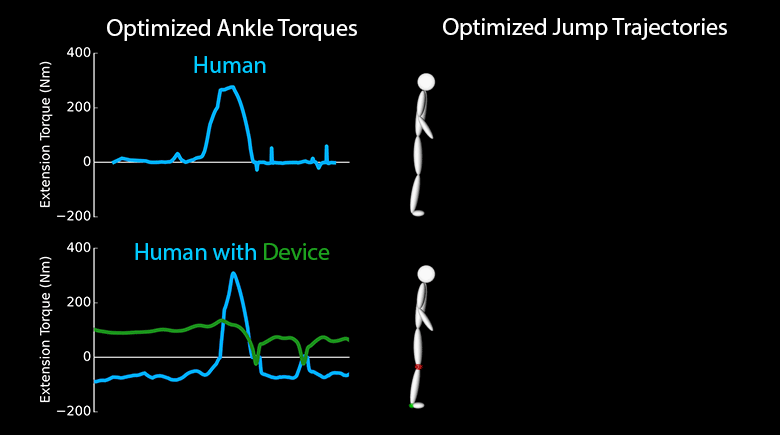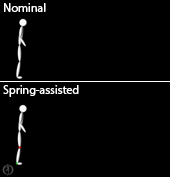
Wearable robotic devices offer great potential to improve human performance for various movement tasks, but the success of these devices has been limited by our insufficient understanding of the complex interactions between the human and assistive device. With computer simulation of the human musculoskeletal system and assistive devices in tandem, designers can analyze these interactions and rapidly iterate on device designs. A simulation testbed allows researchers to simulate many more experiments than are feasible in the laboratory due to constraints on money and time and safety concerns.
We developed a simulation framework to synthesize a realistic human standing long jump and used the framework to explore how simulated wearable robotic devices might enhance jump performance. A planar human model was implemented in the biomechanical software package OpenSim. The model has four joints (ankle, knee, hip, and shoulder) which are driven by physiologically accurate torque actuators. The framework sought to maximize jump distance by optimizing the control signals of each of the physiological torque actuators.
As a baseline, we used the framework to synthesize an unassisted jump and showed that the simulation captured salient features of a standing long jump. We then used the same framework to optimize the controllers for both the human model and various device designs. We designed both active and passive devices, which increased jump distance between 10% and 46%. Analysis of the optimized solutions gave insight into how both the human control and device control adapted together to increase jump performance and also showed how this framework could be used to assess injury risk.
Keywords: Biomechanics, biomechanics, human performance, optimization, robotics, simulation

